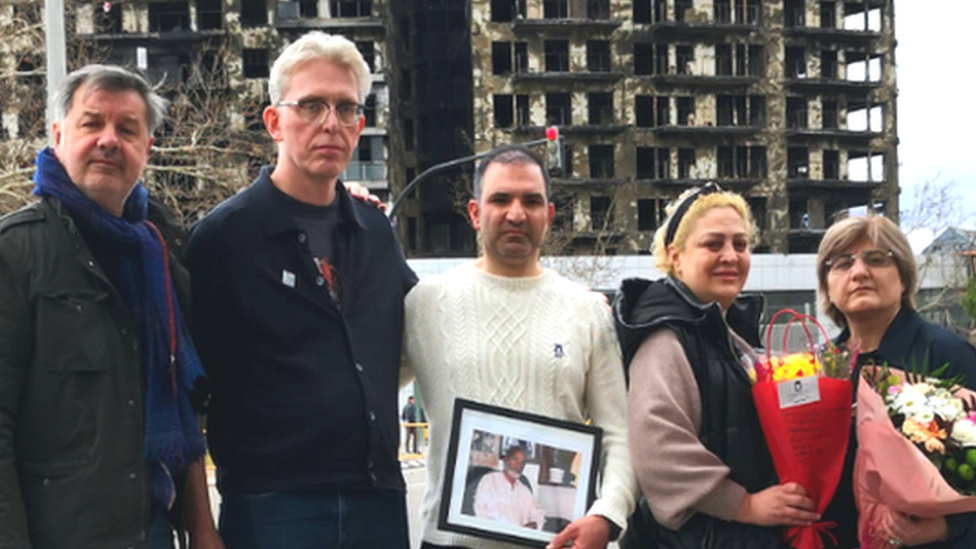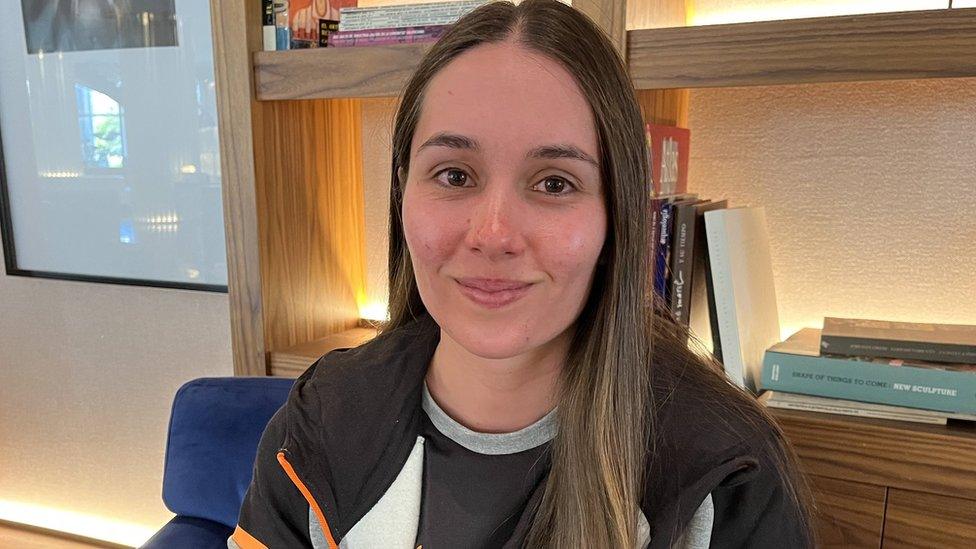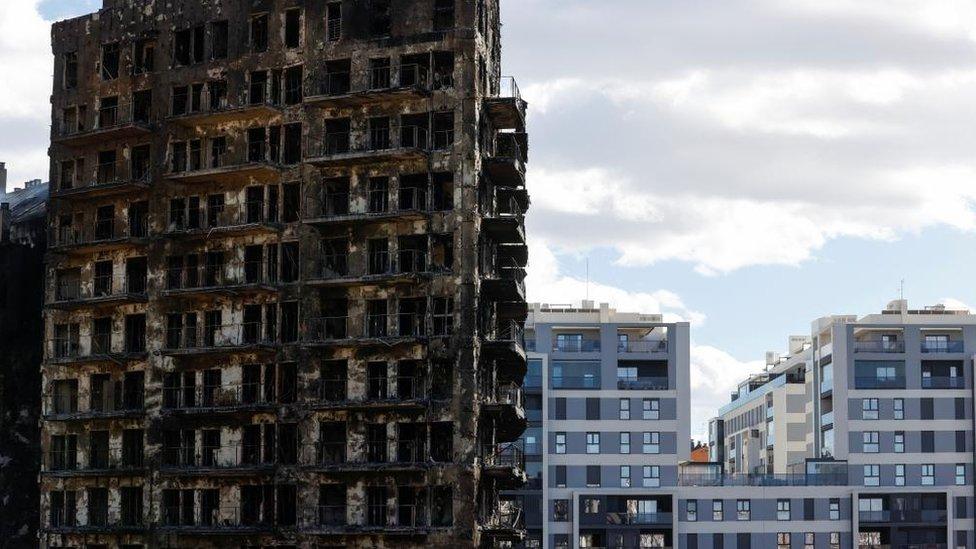Valencia fire: Grenfell-style cladding fear after blaze
- Published

People affected by the Grenfell Tower fire visit the site of the Valencia blaze
Families bereaved by the Grenfell Tower fire have laid flowers at the building in Valencia that was destroyed in last week's fatal blaze.
Meeting emergency responders, they said there were direct parallels between the 2017 disaster in London and the fire in Spain, in which 10 people died.
Construction pictures suggest the cladding used on the building may be of a type now banned in the UK.
The manufacturer Alucoil says it can't confirm if its product was used.
Three people affected by the Grenfell fire travelled to Valencia to show solidarity to those who died, along with two people who were impacted by a fire at apartments in Milan in 2021.
Sawsan Choucair whose mother, sister, nieces and brother-in-law died in Grenfell said she was confronted by "the same scene of destruction, the same image, even the same smell of burning plastic."
She said: "My heart goes out to the families who lost loved ones. It is an unimaginable pain that we experienced, and it never goes away.
"For these Spanish families to experience it now is devastating."
"My greatest fear is who's next?"
Images of the construction of the building on Avenue del General Avilés, retrieved from Google Maps in 2008, suggest the cladding panels used were made by the Spanish multinational Alucoil.
The pictures show a protective covering marked "Larson".
Alucoil has produced three types of cladding panel and the BBC has not been able to verify which ones have been used in the building. However, one of the cladding panels it produces, Larson PE, is known to be highly combustible.
It is no longer marketed by the company but, according to marketing materials, it was available as late as 2018, the year after the Grenfell Tower fire.
Larson PE has a layer of polyethylene, a highly flammable plastic.
This product, along with another more fire-retardant version, Larson FR, would likely be banned for use on many types of new buildings - including residential blocks - above 18m in the UK today, due to changes in the law following the Grenfell Tower fire.
Experts say a third version, Larson A2, with the highest performance in fire, would not have been on the market in 2008.
In a response to the BBC after this story was first published, Alucoil said it could not confirm if one of its products was used in the Valencia tower as it sells through distributors and installers. It said it had "no internal data that our material was installed in Valencia´s building".
The company confirmed that Larson PE was being manufactured in 2018, and pointed out that it makes recommendations about the product's use and includes its official fire classification in marketing material.

The Valencia fire appeared to spread rapidly, with videos showing fire moving up and down panels
In a video of the early stages of the fire, seen by BBC News, the flames are spreading in a similar way to those in the Grenfell disaster. The fire is moving up and down the edges of the cladding panels.
The Larson PE product is similar to Reynobond PE, the cladding blamed for allowing the Grenfell fire to spread so quickly. Both have been given, in some tests, a European classification of E for reaction to fire.
The ratings go from A1, which is best, to F.
Products with an E rating make a "high contribution to fire" according to the European standard.
Clarification 5 March: This article originally said that two types of cladding panel, Larson PE and Larson FR, would be banned in the UK today due to changes in the law following the Grenfell Tower fire and has been updated to clarify the specific circumstances where their use would likely be banned.
Watch: Moment two people are rescued from burning tower block in Spain

THE SEVEN-YEAR-OLD CONJOINED TWINS THAT DEFIED ALL ODDS: An uplifting insight into their lives and the challenges they face
ISRAEL HAS VOWED TO DESTROY HAMAS, BUT CAN IT?: John Ware investigates Hamas's network outside Gaza

Related topics
- Published24 February 2024

- Published23 February 2024

- Published23 February 2024

- Published23 February 2024
